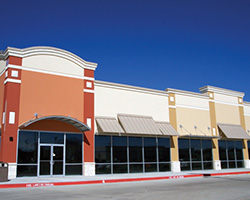Education
Why Isn’t Inflation Rising Faster?
 “Consumer prices have been remarkably stable throughout the economic recovery, and they continue to defy expectations. In searching for an explanation, the global commodities markets may provide some clues.” Jim Glassman, Head Economist, Chase Bank.
“Consumer prices have been remarkably stable throughout the economic recovery, and they continue to defy expectations. In searching for an explanation, the global commodities markets may provide some clues.” Jim Glassman, Head Economist, Chase Bank.
In past decades, inflation rose and fell with aggregate demand. During economic downturns, the price of goods typically stagnated as buyers became scarce, but boom years brought a resurgence of consumer demand, sending prices soaring. Today, as the economy climbs out of a deep downturn, this pattern seems to have broken, with inflationary pressure largely absent.
Following the 2008 financial crisis, consumer prices remained oddly tranquil. The core inflation rate, which had barely surpassed 2 percent during the previous business cycle, fell little more than a single percentage point as the economy sharply contracted. Despite an unprecedented amount of economic slack, prices for most goods continued to rise slowly.
Currently, full employment is on the horizon, interest rates are normalizing and the stock market is setting record highs; but inflation has remained soft, still below the Federal Reserve’s 2 percent target. Aggregate demand collapsed during the downturn and came roaring back in the recovery, so why didn’t prices do the same?
The Expectations Explanation
Some economists believe the Fed has calmed markets by setting long-term expectations for inflation at 2 percent. Since investors trust that the Fed will take the necessary actions to contain any inflationary spiral in the future, bond yields reflect the widespread belief that prices will remain stable over the long term.
Surveys of professional forecasters show that the Fed’s inflation target is indeed anchoring expectations in the bond market. However, investors’ expectations may not be enough to contain real inflationary pressure. When a business raises its prices, the decision probably isn’t based on the manager’s long-term inflation expectations, but instead driven by the rising cost of labor, raw materials, utilities and rent.
When inflationary pressure truly begins to squeeze businesses’ bottom lines, it will probably take more than the Fed’s credibility to keep prices from rising.
Was the Great Recession Really That Great?
Another explanation for the moderate pace of inflation is that aggregate demand may not have dropped as far during the recession as most economists believe. The unemployment rate is generally used as a proxy for economic slack, but the proper measurement of unemployment is up for debate—should all prime working age citizens without a job be counted, or only those actively searching for a job?
If unemployment is defined very narrowly, the 2008 recession was relatively mild by historic standards. The short-term unemployment rate only rose to around 7 percent in 2010, lower than its peak during the recessions of the 1970s and 1980s. If the millions of long-term unemployed and discouraged workforce dropouts created by the downturn are discounted, the pace of inflation seems normal.
The trouble with this theory is that broad measures of unemployment—which showed a tremendous amount of economic slack during the recession—have now returned to normal. In retrospect, it appears that most of the discouraged workforce dropouts would’ve remained in the labor market if more opportunities had been available. Their missing paychecks represented a lack of aggregate demand.
Now that most of the long-term unemployed have returned to the workforce, it’s not surprising that consumer spending has recovered. What is surprising is that the rebound in personal consumption has had such a small effect on the price of consumer goods.
The Commodities Connection
Perhaps global commodities markets have helped contain inflationary pressure in recent years. During the recession, domestic demand for raw materials may have softened, but growing global demand kept prices high for consumers. For example, annual gasoline consumption in the US fell by 200 million barrels between 2007 and 2012, but prices actually climbed by about 50 cents per gallon over the same period.
The same trend was true for a wide range of commodities, including metals, textiles, livestock and coal. US demand for raw materials may have softened, but massive state-sponsored infrastructure projects in China and other developing economies pushed global prices to new highs. As the US economy recovered, global capacity was also rising to meet demand. The spike in commodities prices produced a boom in mining and drilling, and prices began to fall as markets became flooded with new supplies of Australian coal, Brazilian iron and American shale oil.
The rise and fall of commodities prices helps explain why inflation has been so stable. When US consumer demand weakened, the high cost of raw materials and energy kept retail prices from falling. Now that aggregate demand has returned, cheap fuel and materials have allowed businesses to delay raising prices, even as the cost of labor and real estate begins to climb.
The current period of commodities-driven deflation may be waning. Energy prices have stabilized, and headline inflation is moving higher. As the Fed moves to normalize interest rates ahead of inflationary pressure, it’s unlikely to be swayed by monthly volatility in consumer prices. As the peak of the business cycle approaches, inflationary pressure will continue to build, even if rising prices are temporarily curtailed by cheap commodities.
About the Author
Bruce A. Kahn, CCIM, CPM is a Managing Director of Foundation Group Investment Real Estate Solutions, a full-service property management and brokerage company. He has earned the designation of CCIM (Certified Commercial Investment Member) issued by the CCIM Institute, and is a CPM (Certified Property Manager) with the IREM (Institute of Real Estate Management). For further information or for a property analysis, please contact him at 206-324-9424 or by email.
is a Managing Director of Foundation Group Investment Real Estate Solutions, a full-service property management and brokerage company. He has earned the designation of CCIM (Certified Commercial Investment Member) issued by the CCIM Institute, and is a CPM (Certified Property Manager) with the IREM (Institute of Real Estate Management). For further information or for a property analysis, please contact him at 206-324-9424 or by email.














